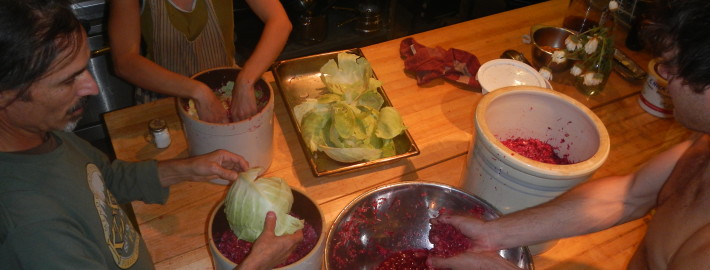The Art of Food Preservation: Sauerkraut
In the modern age there can be a tendency to outsource everything from childcare, to dinner, to dog walking. As I’ve written in previous blogs its the intention here at Full Bloom to cultivate a first hand, direct relationship with food. This starts with the planting and tending of a myriad different vegetable varieties and the harvesting and processing of those vegetables.
This week we processed over 7 gallons of cabbage and beets into sauerkraut. For those of you who are wondering what exactly this substance called sauerkraut is let’s again turn to wikipedia:
“Directly translated: “sour cabbage”, is finely cut cabbage that has been fermented by various lactic acid bacteria, including Leuconostoc, Lactobacillus, and Pediococcus.[1][2] It has a long shelf-life and a distinctive sour flavor, both of which result from the lactic acid that forms when the bacteria ferment the sugars in the cabbage”
Sauerkraut is a way of simultaneously preserving a food as well as creating an immeasurable healthy food source that provides the body with high quantities of benifical bacterium that are often depleted through the use of anti-biotics. Its also a fun thing to do with friends. There is something really satisfying about bringing cabbages in from the field and processing them with others. Its a simple and yet profound act, often overlooked and undervalued in the modern world.
It will be a joy to share the art of fermentation in classes and informal gatherings at Full Bloom in the years to come.
“When General Lee took possession of Chambersburg on his way to Gettysburg, we happened to be a member of the Committee representing the town. Among the first things he demanded for his army was twenty-five barrels of sauerkraut.”
Editor, The Guardian (1869)






Leave a Reply
Want to join the discussion?Feel free to contribute!